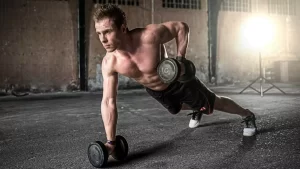If an athlete’s goal is to either best their opponents or participate in sports for reputation or to release the tension, then he will do anything to achieve it. Let’s see what dangers he exposes himself to and how he can defeat them with the power of correct breathing.
To achieve a goal, the athlete will undergo the most difficult training, the consequences of which will be pain or uncomfortable bodily sensations. The balance between exercise and training will collapse and the effort he put in is followed by inefficiency. That happens because of his belief, that pain is only confirmation for the effectiveness of his training and not to warn him about the dangers of his actions. When he observes other athletes, he sees that they are training the same way, pain is a normal companion, so he does not see the need for change. Chronic pain, wear and tear and recurrent injuries accumulate. Chronic pain, wear and tear and recurrent injuries accumulate. But this does not follow the premise that sport should be a healthy mind in a healthy body. The need for a super ego is too great, the influence of the body on the mind is too small.
The AEQ method also includes a way of breathing that increases the athlete’s abilities and his attention to movement. It also affects unconscious internal connections, athlete correctness and self-awareness internally. While doing so, the athlete must balance his training and rest. With all of the above, it will be easier to succeed. Breathing is very important for proper sports development. Understanding the physiological and chemical processes that make breathing possible is just as important as knowing the appropriate diet or the techniques and rules of the sport we want to better master. Breathing is equivalent to movement, it is movement, and therefore its quality and suitability are determined by the coordination of changes in muscle tone of the primary and secondary respiratory muscles and the ability to be aware of the current mode of breathing.
Airflow should be in-sync with the current motor effort.
By practicing correct breathing, the athlete will be able to control his breathing better; he decreases the exaggeration when training, which also decreases the number of injuries and pain. With breathing exercises, he can adequately prepare for the lifting of the load, with proper breathing he calms down faster after the end of the effort and thus better prepares for the next one.
Increasing the role of the body consciousness is the essence of a different approach.
Even when overburdened an athletes movement can become relaxed. Feelings of discomfort, pain and comfort define the relationships between the burdens, are needed for achieving a certain goal, body abilities and motor intelligence/knowledge/organic organization.
- If the physical load is above capacity and motor intelligence, the clutter increases and we feel an ever-increasing pain that points to an ever-stronger and more harmful entropy. If we stubbornly insist on overcoming ourselves and breaking boundaries, clutter leads to damage and wear and tear. In this intensity of the load we always breathe through the mouth.
- If the physical load is less than our abilities, but above the motor intelligence/knowledge/organic organization, we feel effort, we feel discomfort and fatigue, we describe this feeling as “we can do this”. The breathing is mixed (especially if we know the significance of nasal breathing), inhaling through the mouth, exhaling through the nose or we have to control ourselves to maintain full nasal breathing
- If the physical load is within our capabilities or the complexity is less than our current motor intelligence/knowledge/organic organization, we feel the movement as pleasant, light, and playful. We describe the feeling as “we know”. We feel mastery and enjoyment when performing the action. We breathe through the nose without difficulty.
If we wish to achieve top results, we have to increase our motor intelligence, knowledge and organic organization, while interweaving all three at once will help us raise our capabilities. Only then can we raise the difficulty of training. We increase motor intelligence with the help of AEQ exercises and a conscious approach to exercise, work and movement, when possible, of course. We go to extremes in testing, competition, or in circumstances where survival is at stake. This system enables you to achieve mastery in selected areas and approach your highest genetically determined abilities. This approach requires significantly more time, knowledge and reason than the approach through effort and pain, which allows for rapid progress, but with a very limited and increasingly difficult to reach peak. Much like learning to drive a car only in first gear. This system applies to all areas in life. Emotions, personal relationships, business, material positions, education and elsewhere. When analyzing results, feelings and our well-being we can see where we are, how we approach fulfilling our goals and duties while we correct what is necessary for better efficiency.
Dr. Maurice Cottle, the founder of the American rhinological society, states that there are 30 functions performed by the nose, all of which are very important and fulfill the role of our lungs, heart and other organs. Our nasal cavity plays a central part in the physiology of breathing. It filters, heats up and moistens the inhaled air. This allows that inhaled air, when it enters the lungs, has the appropriate temperature and thus has an adequate oxygen supply. Breathing through the nose when walking represents about half as much resistance to air flow compared to breathing through the mouth. The result is a fifth higher oxygen uptake due to higher blood CO2 levels. Breathing through the nose warms and moisturizes the air and prevents the mucosa from drying out, removes a significant amount of pathogens and raises the concentration of nitric oxide in the lungs and blood.
When exercising, doing less strenuous exercises and other normal activities, breathe through your nose instead. An appropriate ratio in endurance sports is 80 percent of the movement with the mouth closed and regular work to increase respiratory arrest. For the other 20 percent, however, a person should perform high-intensity interval training while breathing through your mouth. You only do these when you feel strong, feel good about your body, and want them. This ratio also depends on the psychophysical condition of the athlete, what sport he is participating in and the current season.
During competition when the athlete is sufficiently ready there usually isn’t any need for both, deep breathing and holding their breath. If incorrect breathing is common, then we aren’t yet ready for the challenge ahead and the risk of injury is higher. It is important to maintain a relaxed feeling in your body and to breathe depending on how much air we need. If that isn’t possible, then balancing out breathing should be prioritized. Competitions aren’t the time where an athlete should focus on his breathing, but should instead focus on the competition. That’s why training ones breathing should be done on a daily basis and the key is lower average muscle contraction, which allows for higher respiratory arrest.
Recreational athletes who do not participate in competitions and do not perform heavier exercises have an easier task in the general maintenance of nasal breathing. They usually breathe worse, mainly because they play sports to remove nervousness and tension from themselves. If so, then the athlete should be careful not to develop a hostile attitude towards his body. The analysis of the motives and previous effects of sport on physical and mental well-being enables insights into the need to introduce changes that will enable harmless progress and satisfaction.






